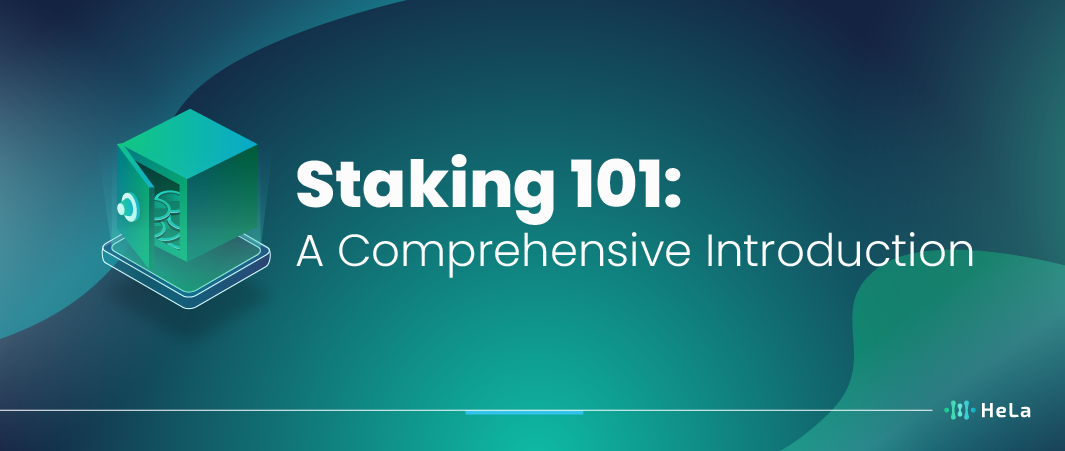In recent years, the term “staking” has become a buzzword in the cryptocurrency community. As the digital currency market evolves, so do the mechanisms for earning and participating within the ecosystem. This article seeks to demystify staking and provide readers with an in-depth understanding of how it functions.
For many, staking represents a method to earn passive income from their digital assets, without the need for active trading or investment. If you’ve ever been curious about how staking can benefit you and the broader cryptocurrency world, read on.
What is Staking?

At its core, staking is fundamentally an economic activity within the realm of blockchain technology. Participants, often referred to as “stakers,” commit a defined amount of their cryptocurrency tokens to a blockchain network. By doing this, they achieve two primary objectives:
Supporting Network Operations
Stakers essentially allow blockchain networks, especially those operating on a Proof of Stake (PoS) consensus mechanism, to utilize their staked tokens for various activities. This includes validating transactions, maintaining security, and achieving consensus among network participants.
Earning Rewards
In return for their commitment, stakers often receive rewards. These rewards can be viewed similarly to interest in traditional finance. Just as money deposited in a savings account can earn interest over time, staked cryptocurrencies can yield additional tokens as a reward for the staker’s participation and support.
But why is this process called “staking”? The term stems from the idea that participants have a “stake” in the network. By locking up their tokens, they’re putting something at risk, but they’re also expressing trust in the network’s future. This stake not only incentivizes honest behavior (as malicious actors stand to lose their staked tokens) but also helps ensure the overall security and reliability of the network.
To fully appreciate staking’s significance, one must understand its role in the broader context of blockchain consensus mechanisms and how it contrasts with other methods, such as the energy-intensive Proof of Work (PoW) used by Bitcoin. While PoW requires enormous amounts of energy and computational effort to validate transactions, staking offers a more energy-efficient approach, with validators chosen based on the number of tokens they hold and are prepared to “commit” or immobilize as collateral..
Also Read: The 10 Most Cost-Effective Layer 1 Solution You Need to Know!
Understanding the Basics of Staking

Staking is a bit like putting your money in a savings account, but for cryptocurrencies. When you stake, you lock up a specific amount of your cryptocurrency in a digital wallet to help the blockchain network run smoothly. It’s kind of like lending a hand to the system. But here’s the cool part: instead of getting interest like you would with a traditional bank account, you actually earn more cryptocurrency as rewards. So, it’s like the network saying “thanks” for your support by giving you extra digital coins.
Here’s the deal in a nutshell: you stake your crypto, help the blockchain do its thing, and in return, you get more of that same cryptocurrency. It’s a way to be part of the action and potentially grow your crypto holdings over time. So, staking isn’t just about sitting on your digital coins; it’s about making them work for you in a straightforward and rewarding way.
The Underlying Mechanisms
In the world of blockchain, there are mainly two ways to make sure transactions are legit: Proof of Work (PoW) and Proof of Stake (PoS). Let’s break them down.
Proof of Work (PoW)
Is like the puzzle-solving method. Imagine you’re trying to validate transactions in a cryptocurrency network, like Bitcoin. Miners in this system have to solve really tricky math problems. When they crack the problem, they get the green light to validate a bunch of transactions and add them to the blockchain. It’s like being the first to finish a tough puzzle, and that’s how they earn their rewards.
Also Read: Blockchain Adoption: An In-Depth Review
Proof of Stake (PoS)
A bit different compared to PoW. Here, it’s more about how much skin you have in the game, meaning how much of a certain cryptocurrency you own and are willing to “stake.” Imagine there’s a list of stablecoins, which are cryptocurrencies tied to the value of real-world assets. The more of these coins you hold and are willing to lock up, the better your chances of being chosen to validate a block of transactions. It’s like having a bigger vote in the transaction validation process because you’ve shown you’re serious about the cryptocurrency by staking more of it.
So, in summary, PoW involves solving complex puzzles, like winning a race to validate transactions, while PoS relies on how much cryptocurrency you own and are willing to lock up, giving you more influence in the process.
The Benefits of Staking
Staking is a financial and technological concept that has gained significant attention in the world of cryptocurrencies and blockchain technology. It refers to the process of actively participating in the validation and verification of transactions on a blockchain network by locking up a certain amount of cryptocurrency as collateral. This collateral, also known as a “stake,” is used to secure the network, process transactions, and earn rewards. The benefits of staking are multifaceted and include:
1. Passive Income
Staking is a way for people to make money without doing much. All you have to do is hold onto some of your assets and lock them up, and in return, you can get more tokens over time as a kind of reward. It’s like putting your money in a special savings account that gives you extra cash without you having to actively do anything.
2. Security
Stakers are like the guardians of a PoS blockchain, and their job is super important for keeping everything safe and sound. See, they’ve got a personal stake in the game, which means they really care about the network doing well. It’s kinda like they’ve invested in a business, so they make sure to watch over it and make good decisions to protect it. That way, we can all trust that our digital stuff is safe and running smoothly.
3. Energy Efficiency
Unlike Proof of Work (PoW), which demands substantial computational resources and consumes a significant amount of energy, Proof of Stake (PoS) offers a greener and more energy-efficient alternative. In PoS, validators are chosen to create new blocks and confirm transactions based on the amount of cryptocurrency they hold and are willing to “stake” as collateral, rather than competing through energy-intensive calculations. This shift to PoS not only reduces the carbon footprint associated with blockchain networks but also aligns with growing environmental concerns by making blockchain technology more sustainable for the long term.
4. Reduced Volatility
Encouraging people to lock up their tokens for staking can help make the cryptocurrency market less jumpy. When more folks hang onto their coins instead of constantly buying and selling, it’s like a big potluck dinner where everyone brings a dish and stays a while. This means fewer rapid ups and downs in the coin’s price, making it a bit steadier and less like a rollercoaster ride for investors.
Potential Risks and Downsides

While staking offers multiple benefits, it’s not without risks. Some potential drawbacks include:
1. Locked Funds
When you stake your funds, they get tied up for a specific duration, which can limit your ability to quickly use or sell those assets. This reduction in liquidity means that if the market takes a big dive, you might face difficulties trying to access and sell your staked assets right away. It’s like locking your money in a vault for a while, and during that time, you might not have immediate access to it if you need it urgently, especially if the market goes downhill.
2. Slashing
In certain Proof of Stake (PoS) systems, when a validator behaves badly or doesn’t do a good job checking transactions, they can lose a part of the money they put up as collateral. This is known as “slashing.” It’s like a penalty to make sure validators play by the rules and do their job correctly, helping keep the system secure and trustworthy. So, if a validator doesn’t act responsibly, they might pay the price by losing some of their staked funds.
3. Inflation
When you’re staking your cryptocurrency and earning rewards, it’s crucial to think about something called inflation. Here’s the deal: if the rewards you’re getting are smaller than the inflation rate of that cryptocurrency, you might actually lose money in the long run. Inflation means the value of the cryptocurrency is going down over time, and if your rewards aren’t keeping up with that, you could end up with less in your wallet than when you started. So, keep an eye on those numbers to make sure you’re not losing out.
Conclusion
Staking stands out as an innovative mechanism within the cryptocurrency space. It not only offers participants a way to earn passive income but also contributes to the security and stability of the blockchain network. As with all investments, it’s crucial to understand the potential rewards and risks. Do your research, understand the terms, and if staking aligns with your investment strategy, it could be a worthy avenue to explore.
As the digital landscape continues to evolve, staking might become an even more integral part of blockchain technology. It embodies the philosophy of rewarding those who support and believe in the long-term vision of decentralized networks. Always remember to approach staking with an informed mindset and make decisions based on thorough analysis and understanding.
Disclaimer: The information provided by HeLa Labs in this article is intended for general informational purposes and does not reflect the company’s opinion. It is not intended as investment advice or recommendations. Readers are strongly advised to conduct their own thorough research and consult with a qualified financial advisor before making any financial decisions.

Joshua Soriano
I am a writer specializing in decentralized systems, digital assets, and Web3 innovation. I develop research-driven explainers, case studies, and thought leadership that connect blockchain infrastructure, smart contract design, and tokenization models to real-world outcomes.
My work focuses on translating complex technical concepts into clear, actionable narratives for builders, businesses, and investors, highlighting transparency, security, and operational efficiency. Each piece blends primary-source research, protocol documentation, and practitioner insights to surface what matters for adoption and risk reduction, helping teams make informed decisions with precise, accessible content.
- Joshua Soriano#molongui-disabled-link
- Joshua Soriano#molongui-disabled-link
- Joshua Soriano#molongui-disabled-link
- Joshua Soriano#molongui-disabled-link

